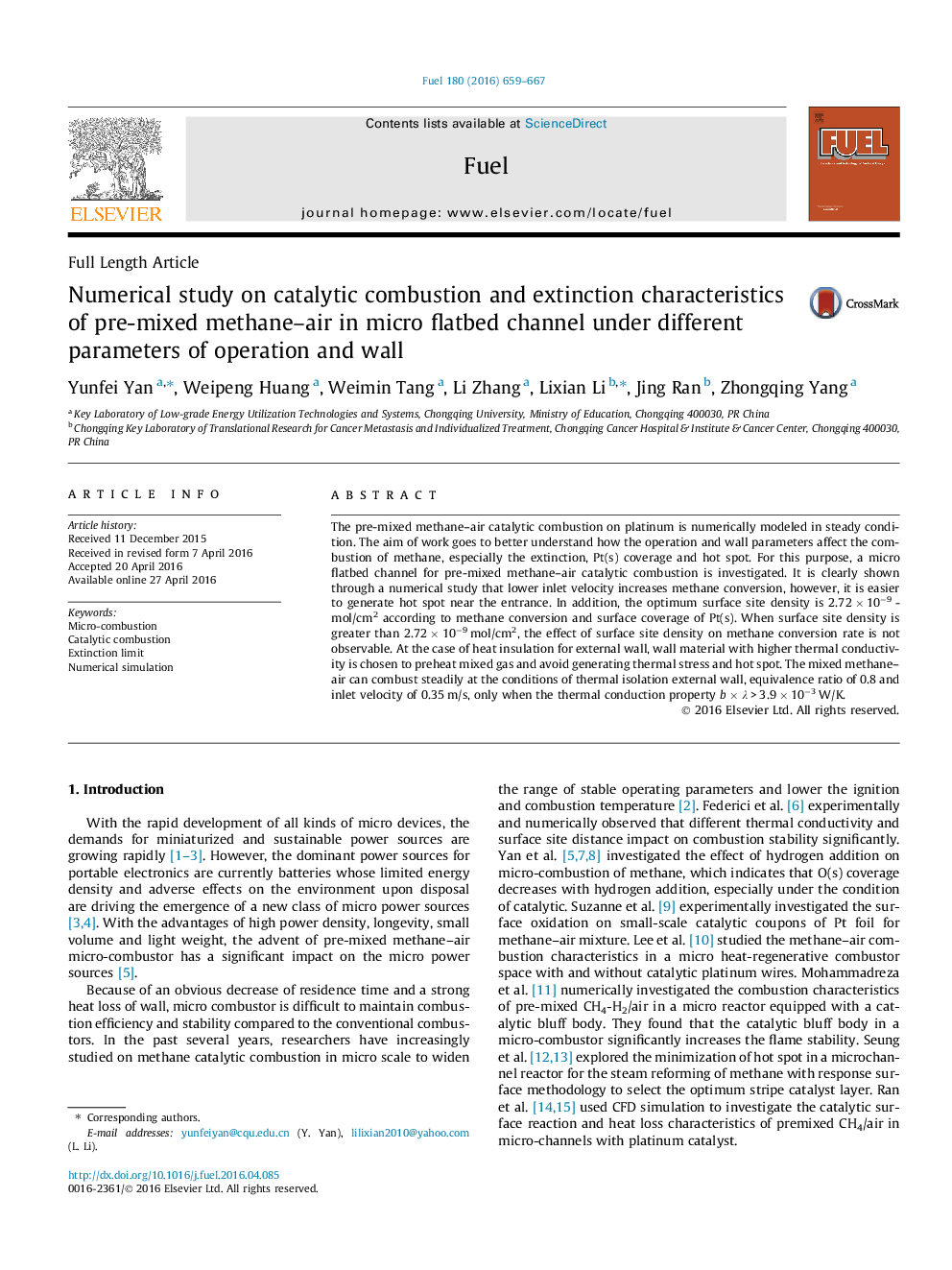| Article ID | Journal | Published Year | Pages | File Type |
|---|---|---|---|---|
| 6633896 | Fuel | 2016 | 9 Pages |
Abstract
The pre-mixed methane-air catalytic combustion on platinum is numerically modeled in steady condition. The aim of work goes to better understand how the operation and wall parameters affect the combustion of methane, especially the extinction, Pt(s) coverage and hot spot. For this purpose, a micro flatbed channel for pre-mixed methane-air catalytic combustion is investigated. It is clearly shown through a numerical study that lower inlet velocity increases methane conversion, however, it is easier to generate hot spot near the entrance. In addition, the optimum surface site density is 2.72 Ã 10â9 mol/cm2 according to methane conversion and surface coverage of Pt(s). When surface site density is greater than 2.72 Ã 10â9 mol/cm2, the effect of surface site density on methane conversion rate is not observable. At the case of heat insulation for external wall, wall material with higher thermal conductivity is chosen to preheat mixed gas and avoid generating thermal stress and hot spot. The mixed methane-air can combust steadily at the conditions of thermal isolation external wall, equivalence ratio of 0.8 and inlet velocity of 0.35 m/s, only when the thermal conduction property b Ã λ > 3.9 Ã 10â3 W/K.
Related Topics
Physical Sciences and Engineering
Chemical Engineering
Chemical Engineering (General)
Authors
Yunfei Yan, Weipeng Huang, Weimin Tang, Li Zhang, Lixian Li, Jing Ran, Zhongqing Yang,
